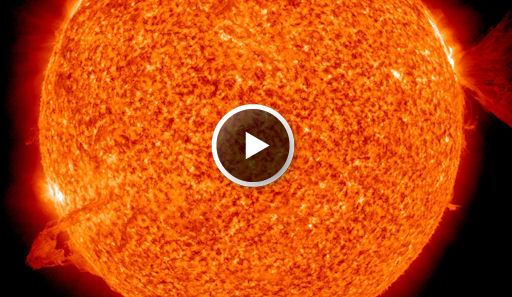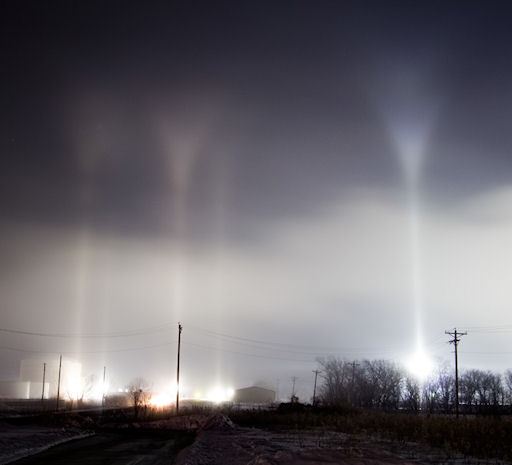| Turn your cell phone into a field-tested satellite tracker. Works for Android and iPhone. | | |
NANOSAIL-D PHOTO CONTEST: NASA and Spaceweather.com have joined forces to launch ... a photo contest. The target is
NanoSail-D, the first solar sail to orbit Earth. Cash prizes for the best photos range from $100 to $500. Visit
nanosail.org for details.
DOUBLE ERUPTION: Jan. 28th began with not one but
two major eruptions on the sun. Separated by more than a million kilometers, the two blasts occurred almost simultaneously on opposite corners of the solar disk. Click on the image to view a movie recorded by NASA's Solar Dynamics Observatory:
On the lower left, a magnetic filament became unstable and erupted, hurling a portion of itself into space. On the upper right, departing sunspot 1149 produced an M1-class solar flare and a bright coronal mass ejection (
SOHO movie). Is this all a big coincidence? Maybe not. New research shows that eruptions on the sun can "
go global" with widely separated blasts unfolding in concert as they trigger and feed off of one another.
These blasts are going to miss in concert, too. Plasma clouds ejected by the two eruptions will sail wide of our planet, one on the left and one on the right. No Earth-effects are expected;
maybe next time.
Light pillars are a common sight around cities in winter. Urban lights bounce off ice crystals in the air, producing tall luminous columns sometimes mistaken for auroras. But the light pillars Mike Hollingshead saw last night near a corn mill in Nebraska were decidely
uncommon. "They had V-shaped tops," he explains, "and some of the Vs were nested." Here is what he saw:
"These light pillars are not just rare, they are exceptional!" declares atmospheric optics expert Les Cowley. "
Ordinary pillars are produced by plate-shaped ice crystals roughly half way between you and the light source. These are different. Their rarely seen
flared tops show that they were made by
column-shaped crystals drifting slowly downwards and aligned horizontal by air resistance."
"The flares are a form of the
upper tangent arcs that we sometimes see in daytime halo displays," he continues. "But even more exotic, some flares have a second one nested within them! Some ice crystal columns do not rotate but instead keep two of their prism faces improbably horizontal to give us the very uncommon
Parry arcs of solar halo displays. The nested flares here are amazing and probably the light halo equivalent of Parry arcs."
Potentially Hazardous Asteroids (
PHAs) are space rocks larger than approximately 100m that can come closer to Earth than 0.05 AU. None of the known PHAs is on a collision course with our planet, although astronomers are finding
new ones all the time.
On January 28, 2011 there were 1185 potentially hazardous asteroids.
Notes: LD means "Lunar Distance." 1 LD = 384,401 km, the distance between Earth and the Moon. 1 LD also equals 0.00256 AU. MAG is the visual magnitude of the asteroid on the date of closest approach.
| | The official U.S. government space weather bureau |
| | The first place to look for information about sundogs, pillars, rainbows and related phenomena. |
| | Researchers call it a "Hubble for the sun." SDO is the most advanced solar observatory ever. |
| | 3D views of the sun from NASA's Solar and Terrestrial Relations Observatory |
| | Realtime and archival images of the Sun from SOHO. |
| | from the NOAA Space Environment Center |
| | the underlying science of space weather |




No hay comentarios:
Publicar un comentario